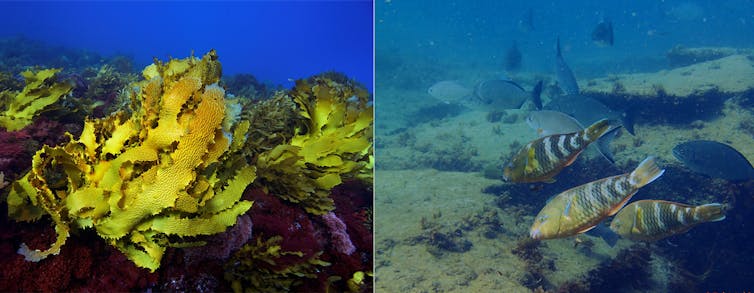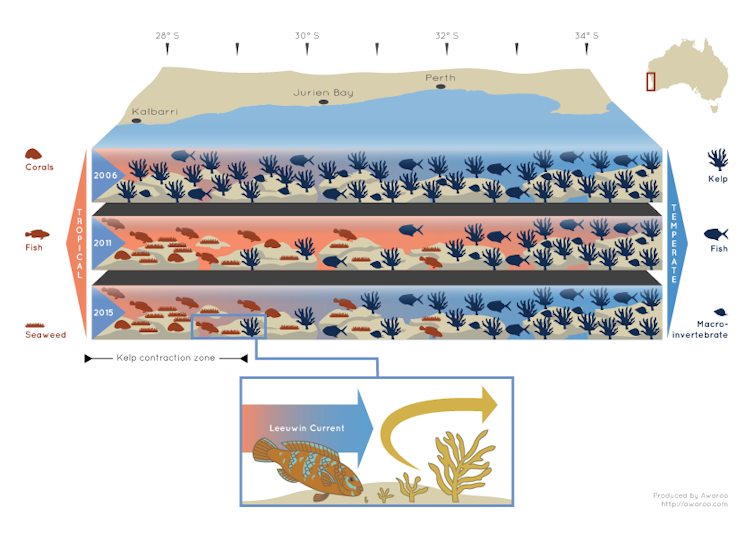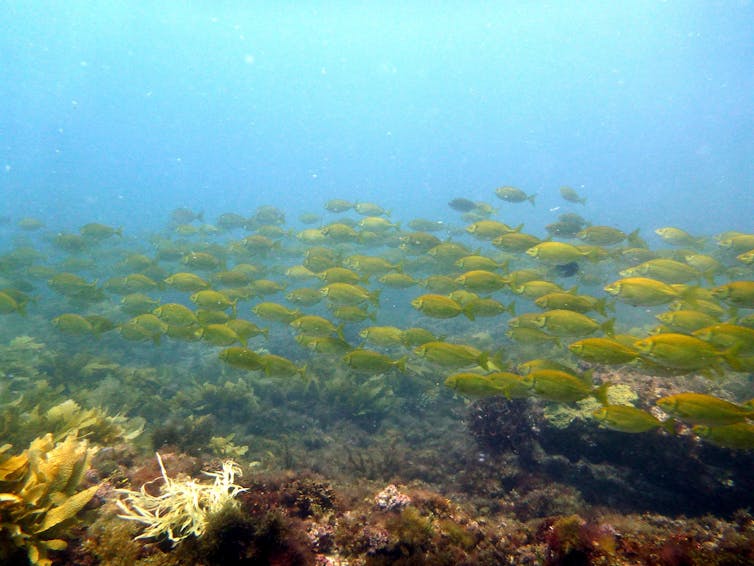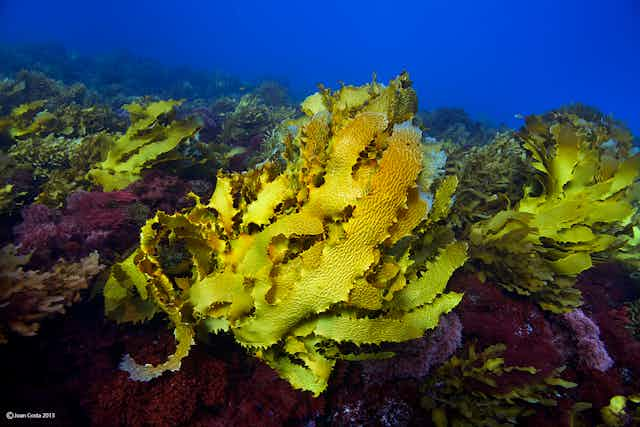Kelp forests along some 100km of Western Australia’s coast have been wiped out, and many more areas damaged, by a marine heatwave that struck the area in 2011.
The heatwave, which featured ocean temperatures more than 2°C above normal and persisted for more than 10 weeks, ushered in an abrupt change in marine plant life along a section of Australia’s Great Southern Reef, with kelp disappearing to be replaced by tropical species.
As we and our international colleagues report in the journal Science, five years on from the heatwave, these kelp forests show no signs of recovery.
Instead, fish, seaweed and invertebrate communities from these formerly temperate kelp forests are being replaced by subtropical and tropical reef communities. Tropical fish species are now intensely grazing the reef, preventing the kelp forests from recovering.

Assessing the damage
We and our team surveyed reefs along 2,000km of coastline from Cape Leeuwin, south of Perth, to Ningaloo Reef between 2001 and 2015.
Up until 2011, temperate reefs were clearly defined by the distribution of kelp forests which formed dense, highly productive forests as far north as Kalbarri in WA’s Mid West.
Since 2011, the boundary between these temperate reefs of southern WA and the more tropical reefs (including Ningaloo) to the north has become less clear-cut. Instead, the sharp divide has been replaced by an intermediate region of turf-dominated reefs.

This has implications for the Great Southern Reef (GSR), which extends more than 8,000km around the southern half of Australia from the southern half of WA all the way to southern Queensland – a coastline that is home to around 70% of Australians.
Kelp forests are the GSR’s “biological engine”, feeding a globally unique collection of temperate marine species, not to mention supporting some of the most valuable fisheries in Australia and underpinning reef tourism worth more than A$10 billion a year.
But our research shows that on the GSR’s western side, kelp forests are being pushed towards Australia’s southern edge, where continued warming puts them at risk of losses across thousands of kilometres of coastline because there is no more southerly habitat to which they can retreat.
While the 2011 marine heatwave affected some 1,000km of Western Australia’s temperate coastline, it was a stretch of roughly 100km extending south of Kalbarri on the state’s Mid West coast that was most severely affected.
In this area alone an estimated 385 square km of kelp forest have been completely wiped out.
Further south, from Geraldton to Cape Leeuwin, the extent of kelp loss was less severe, despite an estimated total area of 960 square km having been lost in the region.
Northern regions towards Kalbarri were more severely affected because these kelp forests were closer to their limit, and also because this area is closer to the tropical regions like Ningaloo Reef, meaning that tropical species could more easily move in.

The problem was exacerbated by the southward-flowing Leeuwin Current, which helps tropical species move south while making it harder for temperate species to move north and recolonise the affected areas of the GSR.
The combination of these physical and ecological processes set within a background warming rate roughly twice the global average, compounds the challenges faced by kelp forests in the region.
The plight of WA’s kelp forests provides a strong warning of what the future might hold for Australia’s temperate marine environment, and the many services it provides to Australians.

